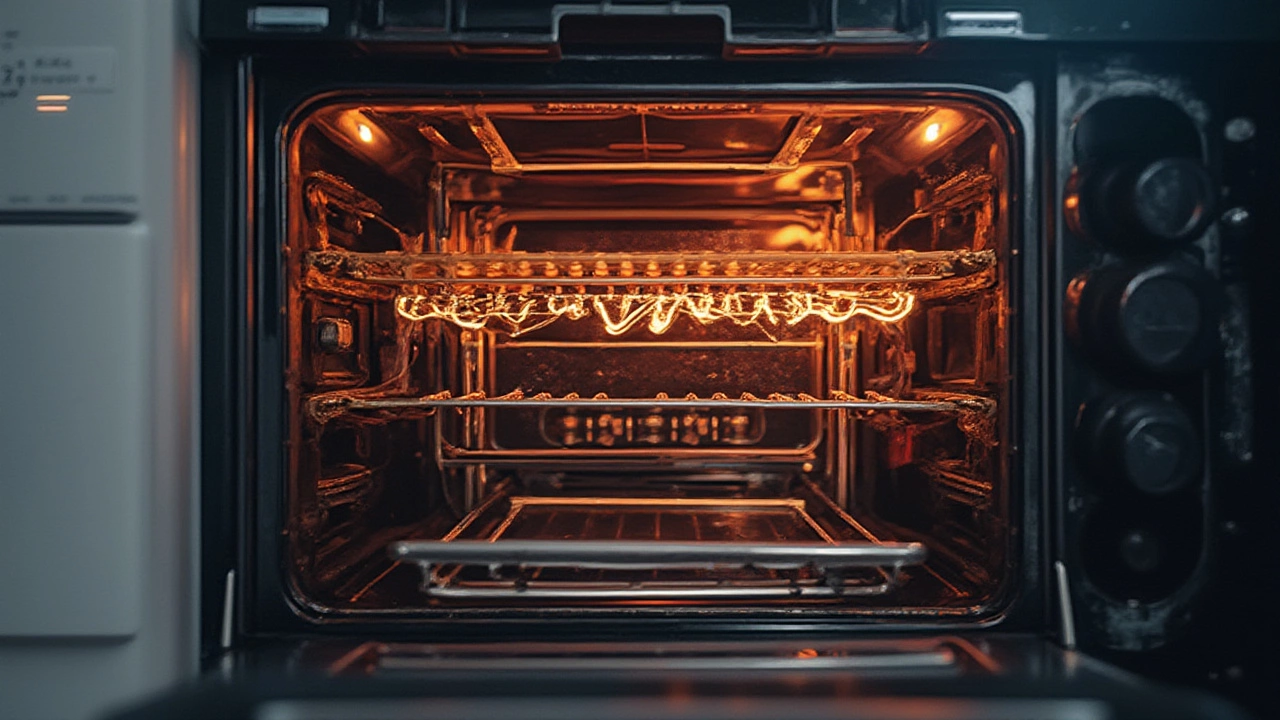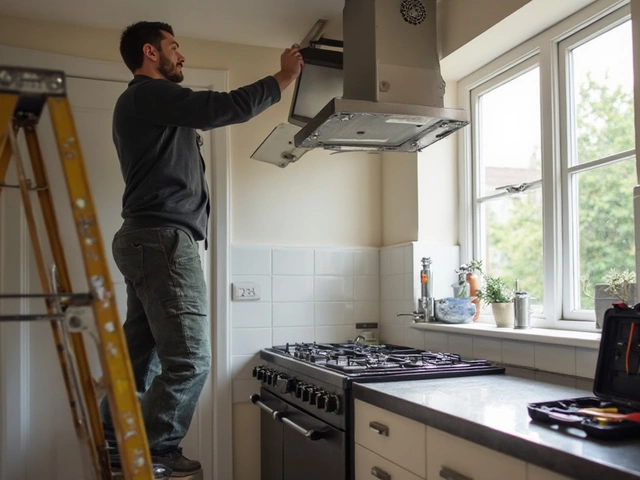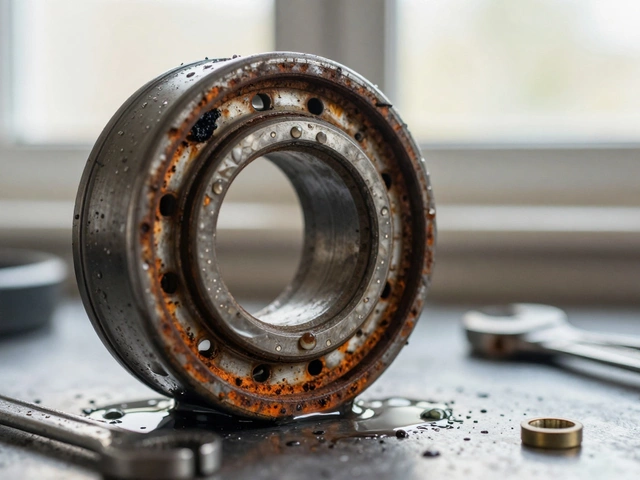Straight out of a busy Tuesday and you’re halfway through prepping dinner—only to find your oven stone cold. The glow that’s supposed to heat up your meal? Gone. Ovens rarely go out with a bang. Instead, they leave you scratching your head with half-baked plans. What’s wild is that a broken oven isn’t even in the top five home appliance breakdowns, yet it’s the one that causes total chaos at dinnertime. Most people blame the oven itself, but the real trouble could be almost anywhere—inside wires, controls, doors, or even the wall socket.
Hidden Culprits: Why an Oven Stops Heating Up
First things first, if your oven won’t heat at all, don’t start shopping for a new one yet. Sometimes the culprit is obvious, but plenty of breakdowns play hide and seek. The power supply is the sneakiest villain with electric ovens. One look at a digital display is never enough—the clock or lights can work perfectly while the actual heating element gets no juice. Grab another appliance, like a kettle, and test the outlet. No power? Check your circuit breaker. Oven circuits commonly have their own breaker, and it may look fine from the outside but actually be tripped. About 40% of all "dead" electric ovens I’ve seen just needed a reset.
Gas ovens have their own headaches. Safety comes first: if you smell gas, stop and call a professional. That said, the most common reason a gas oven won’t heat is a failed igniter. Usually, a working igniter will glow red-hot and signal the gas valve to open. If it just glows but never gets the gas going, replace it. Stove repair shops confirm that igniters are the number one gas oven part ordered nationwide. If you hear clicking but don’t see a flame, or your broiler burner works but the baking burner doesn’t, bet on the igniter. It’s usually held in place by a couple of bolts under the oven floor—if you’re handy, you can swap it out yourself after unplugging the oven or cutting gas at the shutoff valve.
Next up: heating elements. In electric ovens, the bake or broil element (sometimes both) can burn out after years of use. You can spot a bad element because it’ll have visible breakage, bubbles, or black spots. Sometimes it gives out silently; you turn on the oven, everything looks fine, but the food stays raw. Unplug the oven, unscrew the elements, and test with a multimeter for continuity if you want to be thorough. If it’s dead, you can replace just that part. Fixing an element is a lot cheaper than getting a new oven.
Let’s not forget the thermal fuse—a small but crucial safety device. When an oven gets too hot, the thermal fuse cuts the power to prevent a fire. If your oven lights up but never heats, this might be the cause. I’ve run into this one a lot with wall ovens that have no airflow around them. Replacement is pretty simple if you’re careful, but finding the correct part can feel like detective work unless you have the manual.
Temperature sensors also play a part. Today’s digital ovens use a sensor instead of a regular dial-controlled thermostat. This sensor tells the computer what the oven temp is. If the sensor fails, the oven might stay cold forever or run too hot and burn everything. Most of the time, it’s a thin metal rod stuck to the back or side of the oven interior. If you own a multimeter, you can check the resistance—this is usually around 1,080 ohms at room temperature. Less? More? Time for a new sensor.
Door problems can also steal the heat. If the oven door doesn’t close snugly or the seal is worn out, heat just leaks out. Sometimes the latch or hinges bend from years of pressure, especially in households like mine where someone (I’m not naming names, Maya) loves slamming the door when she’s in a hurry. Even brand-new ovens sometimes have misaligned doors. Check your seal—it should be springy and not cracked. Replace as needed. I’ve seen families spend hundreds on unnecessary repairs when really all they needed was a new seal.
Modern ovens come with fancy control boards, and when those fail, the oven just sits there like a brick. If every other part checks out but there’s still no heat, the main circuit board could be fried. These are pricier parts, but sometimes all it needs is a loose connection reseated. If you’re handy with a screwdriver and careful around fragile circuits, you might find a cheap fix—just remember to always disconnect power first.
So what about weird cases? Sometimes, it’s wiring. Mice or corrosion chew up wires, or years of slamming pans in the bottom drawer loosen connections. If you notice other weird electrical gremlins in your kitchen, like flickering lights or sparking plugs, it may be time to call a pro and have the whole circuit checked—sometimes the fault isn’t the oven, but the house wiring.
For quick reference, here’s a handy table of the most common culprits and the best first move to troubleshoot:
| Problem | Clue | Likely Fix |
|---|---|---|
| Oven won’t heat | No heat, but power works | Check heating element, thermal fuse, or igniter |
| Gas oven, no flame | Clicking sound, no flame | Replace igniter |
| Electric oven, no power | No lights, clock blank | Check circuit breaker/fuse |
| Keeps shutting off | Resets mid-bake | Check thermal fuse, sensor, or control board |
| Uneven cooking | Food burnt on top/undercooked below | Check sensor, element, or door seal |
Don’t ignore maintenance. Oven breakages sometimes trace back to greasy buildup blocking vents or sticky residue messing with door seals. Cleaning your oven, especially around elements and fans, makes a bigger difference than people think. Statistics from appliance manufacturers show that regular oven cleaning reduces breakdowns by up to 35%. Debris can cause short circuits or overheating—neither of which ends well for your dinner or your wallet.

Diagnostics: How to Pinpoint Oven Heating Problems
Trying to fix an oven when you don’t know what’s wrong feels like chasing your shadow. But getting specific saves you frustration—and money. Start with the basics: is your oven plugged in? Trivial, I know, but you’d be surprised how often this simple check saves the day, especially after a kitchen cleanup or home remodel.
If the lights and clock are still working, turn your attention to the settings. Modern ovens are packed with options, and a wrong setting can fake you out. Make sure your oven isn’t set on "timer" or "delay start." Sometimes a simple child lock blocks the heat. If your oven display flashes an error code, dig out the instruction manual or look it up (most appliance brands post codes online). Codes like F1, F3, or F9 often point right to the failed part—sensor, element, or board. Write the code down, as some ovens clear it if powered off.
How about the oven’s elements? Turn to "bake," set it to its highest temp, and peek in. Does the bottom element glow orange-red after a minute or two? It should. If it stays black or only gets warm, it’s likely burned out. If the broil function works but bake doesn’t (or vice versa), swap the elements to spot the bad one. For double ovens, try both units to see if the problem is isolated or global.
For gas ovens, open the broiler or oven drawer. Is the igniter glowing? If no, start there. If yes and still no flame, sniff for gas at the oven burner. If you ever suspect a gas leak, don’t mess with it—call your gas provider or a repair specialist. Simple rule: no one’s dinner is worth risking your safety.
You can do some diagnostics with a basic digital multimeter (costs under £10 in most hardware stores). Unplug the oven, and test the heating element and temperature sensor for continuity. No beep or reading? That part’s done for. If you see surface charring or exposed wires, that’s a clear replacement job.
Door seal checks are low-tech but important. Place a strip of paper in the closed oven door and pull gently. If it slides out with no resistance, your seal isn’t tight. New rubber gaskets make a world of difference, especially in older ovens.
What if your oven heats unevenly? Use an inexpensive oven thermometer (usually less than £5). Sometimes the dial’s just lying to you. If the oven is under-heating, your food will always be underdone. If the temp is wildly off from your setting, suspect the sensor or dial. A twenty-degree swing is typical for an older oven—the fix is usually a new sensor or recalibration, and every brand does it a bit differently. Again, check the manual or manufacturer’s site for exact steps.
When all else fails, look up recalls. Sometimes, a batch of ovens gets released with a lurking defect—bad boards, unreliable switches, or defective seals. Registering your appliance (I’m looking at you, those who toss the registration card) helps you get notified early if there’s a known issue with your model.
Finally, don’t skip testing the wall socket, especially for built-in ovens. I’ve seen brand-new ovens blamed for not heating, when the socket wiring came loose behind the wall. If you don’t feel comfortable messing around with electricity or gas, just call a pro—no shame in that. Repairs on modern ovens often cost less than £100, way below the price of a new machine—and less hassle than carrying your frozen lasagna over to your neighbor’s house.

Preventing Troubles: Extending Your Oven’s Life and Avoiding Costly Repairs
People often treat their oven like a tank—until it sputters, then it’s chaos. But you can dodge most heating issues with simple habits. Start with monthly cleaning, especially around the door seal, vents, and inside panels. Keeping grime off the heating element matters more than you’d think; built-up grease acts like insulation, making your oven work harder just to heat up. Manufacturers like Bosch and Whirlpool note that cleaning the oven and gasket regularly boosts efficiency and extends the oven’s life by up to 25%.
Another easy win? Check your oven's feet and level it out. If one foot is off and the oven tilts, the heat pools to one side, wearing out elements and sensors early. Got an oven on a dodgy shelf or stand? Straighten it out—two minutes with a level saves a load of future repairs.
Don’t slam the door. Maya has gotten better about this since she realized that a bent hinge or latch really does cost money. Closing the door gently keeps the glass and seals intact, helping your oven keep its heat where it belongs. If you do notice the glass gets foggy or the door moves wonky, order replacement hinges now instead of risking a total breakdown mid-bake.
If you use your oven a lot (daily, or for big events like family pizza night), expect faster wear. Just like your car, the more you use it, the more likely a part will give out. Routine checks can spot trouble: look for blackened elements, inspect the sensor, and test the door every few months. Knowing the make and model of your oven will help you find the right parts fast—write them down somewhere easy to find.
Kitchens get hot, but your oven’s cooling fan is working hard behind the scenes. If the fan starts sounding weird (buzzing, squeaking), clean it to get rid of dust and check if it spins easily. Ovens with blocked fans tend to overheat and may suddenly shut off mid-cook—most home oven breakdowns from overheating are tied to fan failure.
If your circuit breaker pops frequently when the oven heats up, don’t just keep resetting it. Hot electrical wires can spark, and the smell of plastic or burning is a major red flag—call an electrician. About 10% of oven fires start with electrical faults, usually caught first by a tripping breaker or sizzling sounds.
One more tip: Use your oven’s self-diagnosis modes. Many modern ovens let you run a test cycle, and some even send info to your phone or display a part number for failed sensors. If your appliance is Wi-Fi enabled, check the app for diagnostic help before you start pulling it apart.
Finally, schedule a professional tune-up every few years, especially for older ovens. Think of it as MOT for your appliance. Even just tightening all terminals and checking the mainboard wiring makes a difference, and it gives you peace of mind for less than the cost of a celebratory restaurant dinner when your oven works as it should.
If you’re hitting repeated heating issues—despite cleaning, part swaps, and checks—it might be worth weighing the cost of ongoing repairs against buying new. But unless your oven is making scary noises, tripping breakers, or leaking gas, most fixes are straight-up parts swaps.
No magic tricks: stick to these habits, and you’ll catch problems before they wreck your meal plans or monthly budget.





